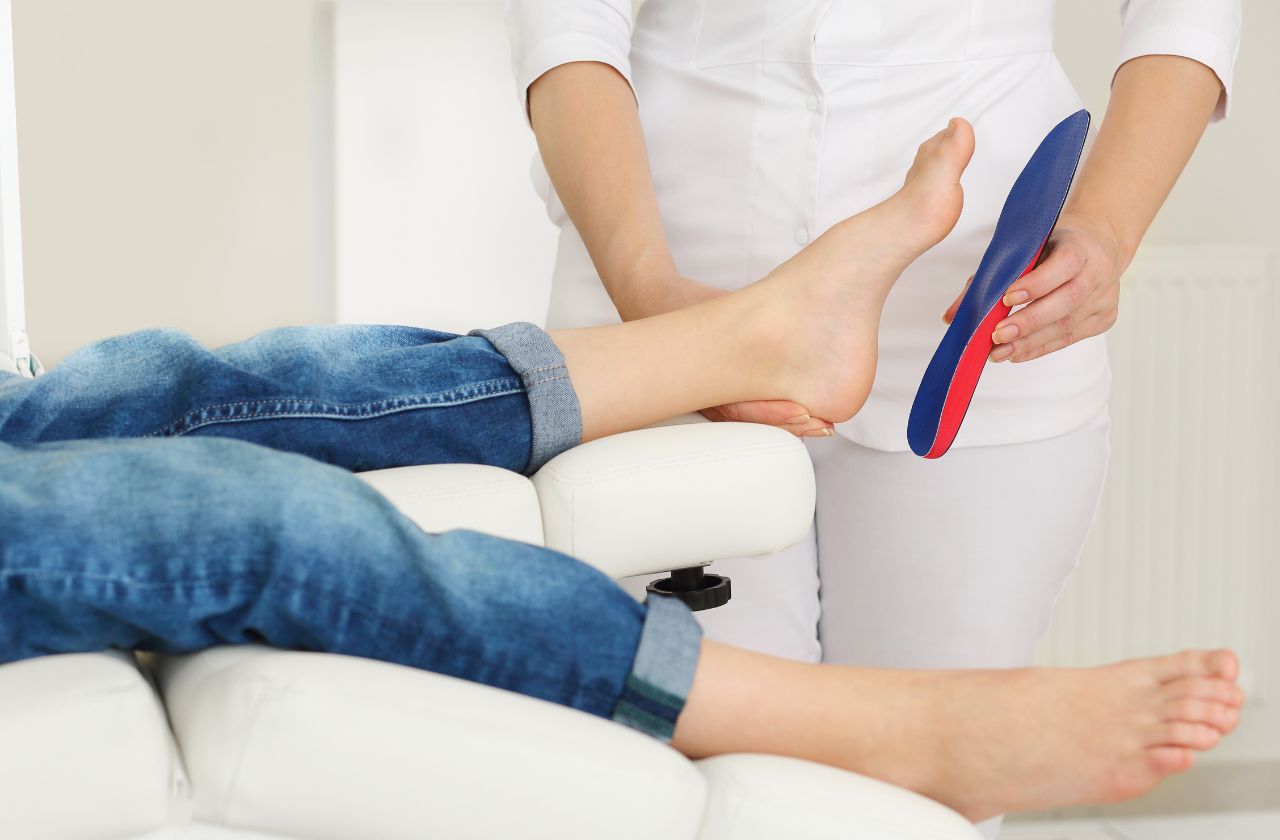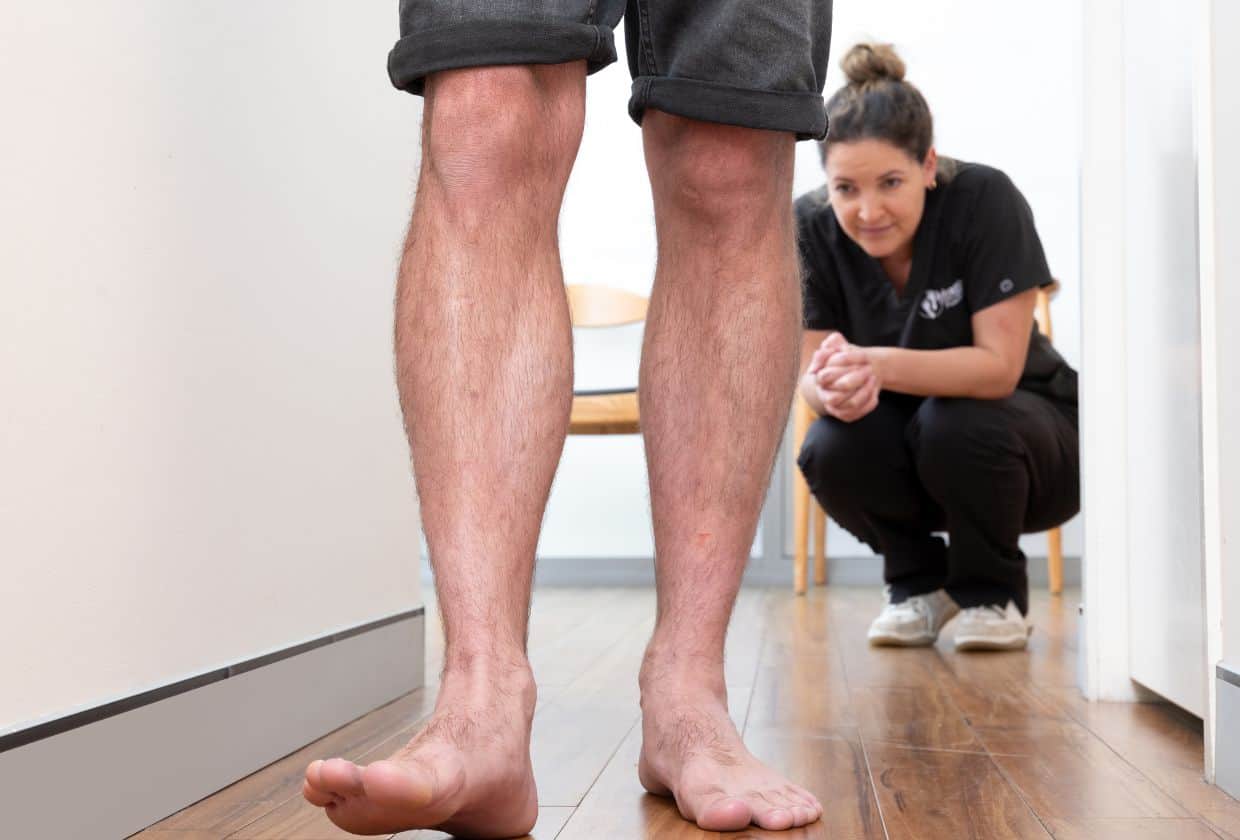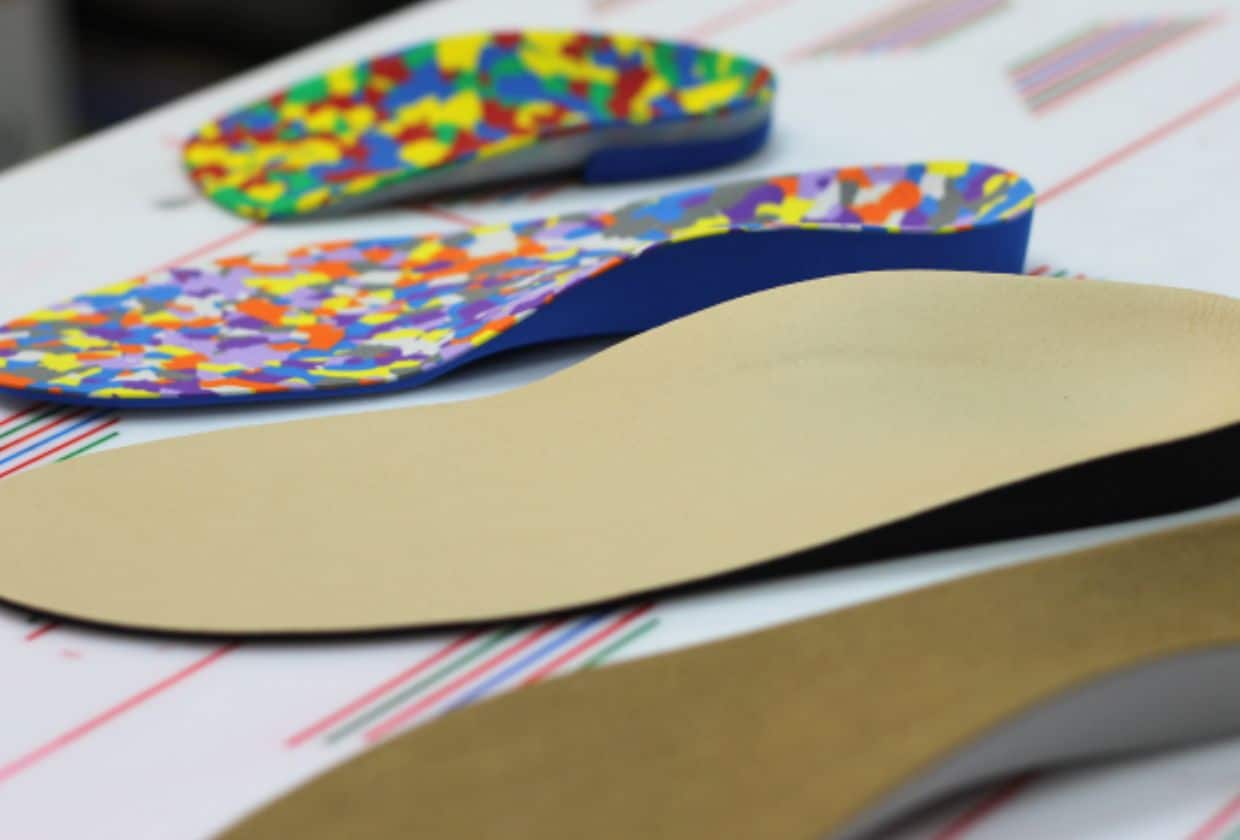Custom Orthotics
You may have seen “orthotic inserts” available from supermarkets, pharmacies and footwear retailers. These are not true ‘orthotics’. Custom orthotics are a medically prescribed device available only through certain regulated health practitioners in Australia. The main health providers who prescribe foot orthoses in Australia are podiatrists.

What are custom orthotics?
The ‘custom’ means it is custom-made for you. A custom orthotic is made by taking a 3D scan of your foot. This stage means the orthotic is tailored to your feet and the orthotic can accurately and effectively provide the support, cushioning and control needed. For example, if a problem area on your foot needed to be offloaded, the area would be marked and the orthotic made so that the adjustment aligns perfectly with your foot.
In comparison to custom orthotics, the ‘over the counter’ or ‘prefabricated’ orthotics provide the ‘average needed’ support and cushioning. They are designed for the ‘average’ foot and ‘average’ need. These options will often not match your foot well or will be unable to provide the level of adjustment your feet require. They may even put pressure on the wrong areas of your foot. Think of pre-made orthotics like buying a suit off the shelf from a store versus buying a tailored suit.
What are orthotics used for?
Your feet are an extremely important part of your body. All of the bones, muscles and ligaments in your feet work to support and control your entire body while you are standing, walking and running. At times, your feet need to absorb nearly 2.5 times your body weight’s worth of force!
It is no wonder that when something upsets this delicate balance, your feet (and as a result the rest of your body) can feel sore and fatigued. This lower limb pain is treated with orthotics.
Common causes of lower limb pain:
- Trauma – such as a sprain, fall or sporting injury
- Overloading either excessive activity or rapid changes in bodyweight or training load
- Genetics abnormal biomechanical alignment (such as flat feet, bunions or high arches) which creates an imbalance in the load going through muscles and joints
- Health conditions which affect joints and/or connective tissue – such as arthritis, hypermobility and developmental disorders
Orthotics are designed to bring balance back to your feet by reducing and redistributing the forces flowing through your feet. To do this they reposition foot joints and provide targeted cushioning. This means that injured muscles, tendons and joints are given a break, while underutilised structures can start taking on more work. As your feet are the base of your body, these biomechanical corrections have a flow-on effect up to your knees, hips and back. This can result in reduced foot and leg pain, reduced callus build-up, improved posture and greater endurance.
Are custom orthotics right for me?
Typically, custom orthotics are the most effective solution for correcting issues with foot biomechanics. If you are considering if custom orthotics are the right fit for you, be sure to speak with your podiatrist. Your podiatrist will assess your lower-limb biomechanics in both static (standing) and dynamic (walking/running) motion. They will use this information along with the 3D scan of your foot to create an orthotic for your specific needs.

What conditions do custom orthotics help treat?
Orthotics help most causes of foot pain and it is always worth having a chat to your podiatrist. As a general guide, some common conditions we treat with orthotics are:
- Symptomatic flat (overpronated) feet
- High arched (pes cavus) feet
- Plantar fasciitis
- Heel pain
- Posterior tibial tendon dysfunction
- Bunions
- Foot and knee Osteoarthritis
- Drop-foot
- Ankle instability
- Hypermobility
- Morton’s neuroma and neuritis
- Sinus tarsi syndrome
- Achilles tendinopathy
What will getting custom orthotics look like?
Once you’ve decided to go ahead with custom orthotics, you can expect to see your podiatrist for a few different appointments:
Appointment 1
Biomechanical Assessment and 3D Laser Scan
What will happen at this appointment?
During a biomechanical assessment your podiatrist will examine the position and motion of the joints in your feet, legs and hips. Your podiatrist will use a visual gait analysis to identify any abnormalities to be corrected.
Your podiatrist will mark your feet before scanning them using the 3D laser scanner. The scan is very quick meaning you just need to lay still for 30 seconds. Your podiatrist will assess the captured images and use these to complete your orthotic prescription.
This appointment will take approximately 40 minutes.
What do I need to bring?
- Bring the shoes you intend to put your orthotics in.
- Wear unrestrictive clothing. Your podiatrist will need to be able to see your body’s range of motion.


Appointment 2
Custom Orthotic Dispense
What will happen at this appointment?
1-2 weeks after your biomechanical assessment and scan appointment, your orthotics are available for collection. Your podiatrist will fit the orthotics into your footwear, making minor adjustments as needed. You will be asked to walk with the orthotics in your footwear to test your comfort, and given instructions on how to wear them in to get the most out of your new custom orthotics!
This appointment will take approximately 30 minutes.
What do I need to bring?
- The shoes you brought to your biomechanical assessment and scan appointment. This is so your podiatrist can fit your orthotics into your shoes.
- Unrestrictive clothing. Your podiatrist will need to assess the impact of your orthotics as you move.
Appointment 3
Orthotic Review
What will happen at this appointment?
A few weeks later it is essential you return to your podiatrist for an orthotic review. At this stage your orthotics should be worn in and any issues that are likely to persist can be identified and addressed.
In addition, your podiatrist will reassess your posture and gait with the orthotics. This will allow them to make any further adjustments to optimise your outcome.
Your podiatrist will recommend the appropriate time for your next orthotic review.
This appointment will take approximately 30 minutes.
What do I need to bring?
- Your orthotics.
- The shoes you are wearing your orthotics in.


Appointment 4
Second set of custom orthotics (optional)
What will happen at this appointment?
Once you and your podiatrist are happy and see progress, you will probably wish you had orthotics in all your shoes. Sometimes orthotics fit easily into multiple pairs of shoes but often the style and fit is too varied. To avoid compromising the integrity of the orthotic, your podiatrist must complete another prescription. Many patients have orthotics in their athletic shoes and a pair in their work or everyday shoes.
If it is within one year since your first set of orthotics, we can arrange a second set at a discounted price. Often we won’t do a new ‘biomechanical and scan’ appointment. Just bring the shoes you would like an additional set of orthotics fitted into to your podiatrist. They will complete a new orthotic prescription for you.
What do I need to bring?
- Bring the shoes you intend to put your second set of orthotics in.
Appointment 5
Ongoing monitoring (6 months - 12 months)
What will happen at this appointment?
A number of factors affect the lifetime of your orthotics. These include activity levels, footwear, materials, whether your feet have grown and how the orthotics are cared for.
It is important to monitor your orthotics for signs of deterioration before they cause an issue with your initial foot problem. We recommend reviewing orthotics at least once a year. This makes sure we catch any issues before you start experiencing problems from your orthotics no longer working well.
What do I need to bring?
- Your existing pair/s of orthotics.
- The shoes your wear your orthotics in.
- Any other shoes you want to have orthotics in.

How do I go about getting custom orthotics?
The first step towards getting orthotics is to speak with your podiatrist. If you are already seeing a podiatrist on a regular basis, they will likely have a good idea of how custom orthotics will benefit you. You can call us on 1300 76 33 66 to book an initial consultation where your needs will be assessed.
